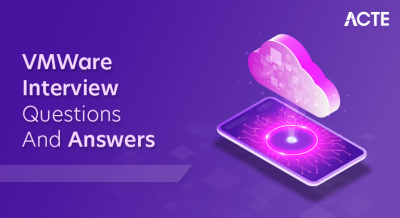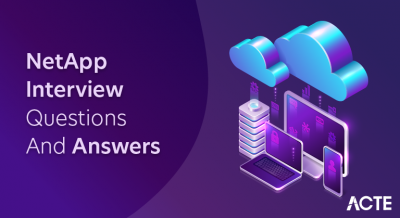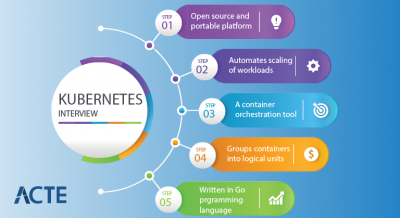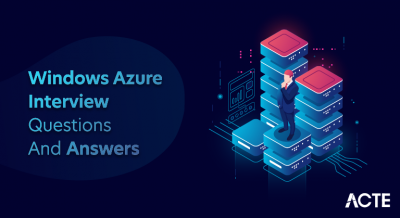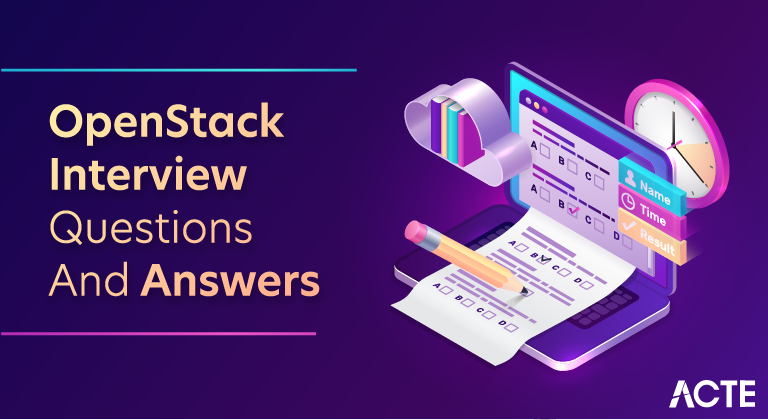
OpenStack is an open-source cloud computing platform that’s like the Swiss Army knife for managing and building cloud infrastructure. Picture it as your digital handyman, equipped with a set of tools to handle everything from launching virtual machines and managing storage to orchestrating your entire cloud ecosystem. With components like Nova for compute resources, Swift for object storage, and Keystone for identity management, OpenStack offers a comprehensive solution for creating and maintaining private or public clouds.
1. What is Openstack?
Ans:
OpenStack is a open-source cloud computing platform that offers a variety of services for constructing and operating private and public clouds. OpenStack is intended to provide flexibility, scalability, and interoperability, making it a desirable tool for businesses wishing to build and operate their own cloud infrastructure.
2. Why is Openstack used in cloud computing?
Ans:
It offers an open-source, vendor-neutral platform that allows organizations to build and manage their cloud infrastructure, reducing dependency on proprietary solutions and providing greater flexibility and control.
3. What are the key components of Openstack?Ans:
- Nova (Compute Service)
- Glance (Image Service)
- Cinder (Block Storage Service)
- Swift (Object Storage Service)
- Neutron (Networking Service)
4. What is the difference between a public cloud and a private cloud?
Ans:
Public Cloud: Third-party cloud service providers including Google Cloud Platform (GCP), Microsoft Azure, and Amazon Web Services (AWS) own and operate public clouds. Through the internet, these providers make their cloud infrastructure accessible to the entire public. Users share a single pool of computer resources, and generally, access is offered by subscription or pay-per-use.
Private Cloud: Private clouds, on the other hand, are owned, operated, and dedicated to a single organization or business. They can be hosted on-premises (on the organization’s own hardware) or by a third-party provider. Private clouds offer exclusive access to computing resources and are not shared with other organizations.
5. What is Nova in OpenStack?
Ans:
Nova is one of the core components of OpenStack, and it serves as the Compute service. Its primary function is to manage and provision virtual machines (VMs) within an OpenStack cloud infrastructure. Nova plays a crucial role in enabling users to create, run, and manage VM instances, making it a fundamental building block for cloud computing in an OpenStack environment.
6. What is Nova’s primary function?
Ans:
- VM Lifecycle Management
- Hypervisor Abstraction
- Resource Scheduling
- Scalability
- Isolation and Security
7. Explain the role of Glance in OpenStack.
Ans:
Glance plays a critical role as the Image Service. Its primary function is to manage and store virtual machine (VM) images, allowing users to efficiently create and deploy virtual machines within the OpenStack cloud infrastructure.
8. What type of data does Glance manage?
Ans:
Glance stores and manages operating system images, which serve as the base for creating VM instances. These images typically include the complete OS installation, including the kernel, libraries, and system files.
9. What is Cinder?
Ans:
Cinder is one of the core components of OpenStack, and it serves as the Block Storage service. Its primary function is to provide scalable and persistent block storage volumes to virtual machines (VMs) within an OpenStack cloud infrastructure.
10. How does Cinder contribute to OpenStack’s storage capabilities?
Ans:
Cinder is designed to scale horizontally, enabling organizations to add more storage nodes and resources to their OpenStack cloud as their storage needs grow. This scalability ensures that storage capacity can be expanded to accommodate increasing workloads and data requirements.
11. How does Swift differ from Cinder in terms of storage in OpenStack?
Ans:
| Swift | Cinder |
|---|---|
| Swift stores data as objects and organizes them in containers. | Cinder provides block-level storage, which means it offers raw storage volumes that can be formatted with file systems by the VMs using them. |
| Each object is associated with metadata, and objects are accessed based on unique identifiers. | This allows for the creation of directory structures and supports traditional file operations. |
12. What is Neutron?
Ans:
OpenStack Neutron is a project within the OpenStack cloud computing initiative that provides networking as a service (NaaS) between interface devices (e.g., vNICs) managed by other Openstack services (e.g., nova). It essentially deals with the networking aspect of cloud computing within the OpenStack framework.
13. What is the significance of Neutron in OpenStack networking?Ans:
- Integration with Other OpenStack Services
- Dynamic Scaling and Resource Management
- Network Services and Extensions
- Software-Defined Networking (SDN) Integration
- Centralized Network Management
Ans:
- Identity Management
- Authentication
- Authorization and Access Control
- Service Catalog
- Token Management
- Federation and External Identity Sources
Ans:
Horizon is the web-based user interface (UI) for managing and interacting with OpenStack services. It provides a graphical dashboard that allows users and administrators to access and manage various resources and functionalities within the OpenStack cloud computing platform.
16. How does Horizon relate to OpenStack’s user interface?Ans:
Official Dashboard: Horizon is the official web-based dashboard for OpenStack, serving as the primary graphical user interface.
Web Interface: It provides a user-friendly web interface for interacting with and managing OpenStack services.
Service Integration: Horizon integrates with core OpenStack services, including Nova, Swift, Neutron, Cinder, and others.
Resource Management: Users can use Horizon to manage and monitor resources such as instances, volumes, and networks in their OpenStack cloud.
17. Explain the function of Heat in OpenStack.
Ans:
Template-Based Deployment: Heat allows users to define their infrastructure using templates.
Automated Resource Provisioning: Once a template is created, Heat can automatically provision the specified resources.
Orchestration: Heat provides orchestration capabilities, coordinating the creation and configuration of resources in a specified order.
18. What is the role of the OpenStack Dashboard in the architecture?
Ans:
The OpenStack Dashboard, or Horizon, serves as the visual gateway to OpenStack’s complex architecture. Acting as the web-based user interface, it empowers administrators and users to effortlessly manage cloud resources without delving into command-line intricacies.
19. Describe the communication flow between different OpenStack components.
Ans:
In the orchestration of an OpenStack environment, communication flows seamlessly between its diverse components. User interactions commence through the Horizon Dashboard or command-line interfaces, triggering authentication and authorization checks by the Identity Service (Keystone).
20. How does OpenStack handle scalability and load balancing in its architecture?
Ans:
Horizontal Scaling: OpenStack is designed for horizontal scalability, allowing organizations to add more resources by adding additional compute, storage, or networking nodes.
Elasticity with Heat: The Orchestration Service (Heat) in OpenStack enables the automatic scaling of resources based on predefined templates.
Load Balancing as a Service (LBaaS): OpenStack Neutron provides Load Balancing as a Service (LBaaS), which allows for the distribution of incoming network traffic across multiple instances.
21. What are the different deployment options for OpenStack?
Ans:
- DevStack
- Packstack
- RDO (Red Hat Distribution of OpenStack)
- TripleO (OpenStack on OpenStack)
- Charms
22. What are floating IPs ?
Ans:
Floating IPs are IP addresses in a cloud computing environment that can be dynamically reassigned from one virtual machine (VM) to another within the same network. They provide a way to associate a public IP address with a specific VM for external communication, even if it is moved or replaced.
23. Why are Floating IPs used in OpenStack networking?
Ans:
- External Communication
- Dynamic IP Assignment
- High Availability
- Load Balancing
- Network Address Translation (NAT)
- Support for Multi-Tenancy
24. How does Neutron manage network connectivity in OpenStack?
Ans:
Neutron, the networking component of OpenStack, is the architect behind managing network connectivity within the cloud environment. It empowers users to create and administer virtual networks, allowing for the segmentation or sharing of networking resources across different projects.
25. Explain the difference between a provider network and a self-service network in Neutron.
Ans:
| Provider Network | Self-Service Network |
|---|---|
| Provider networks are typically used for connecting instances to the external network or the internet. | Self-service networks are designed for user-driven, project-specific networking needs within OpenStack. |
| The configuration of provider networks is typically managed by the cloud administrator or operator. It often involves integration with the physical network infrastructure. | Users (tenants or projects) have the ability to create and manage self-service networks based on their requirements. This provides flexibility and independence to individual projects. |
26. What is an Open vSwitch?
Ans:
Open vSwitch (OVS) is an open-source, multi-layer virtual switch that is widely used in virtualized server environments and cloud infrastructure. It provides a flexible and programmable network connectivity solution, particularly for virtual machines (VMs) and containers.
27. How is Open vSwitch used in OpenStack?
Ans:
- Integration with Neutron
- Layer 2 Connectivity
- VLAN Tagging
- Integration with Other Networking Technologies
- Security Groups and Filtering
28. What common issues might administrators face when operating an OpenStack cloud ?
Ans:
- Complex Deployment and Configuration
- Networking Challenges
- Resource Scaling and Performance
- Security and Access Control
- Upgrades and Patching
- High Availability and Fault Tolerance
- Integration with External Systems
29. How can you keep track of an OpenStack deployment’s functionality?
Ans:
Maintaining the functionality and health of an OpenStack deployment involves implementing robust monitoring practices. By employing tools such as Nagios, Prometheus, or Grafana, administrators can gain real-time insights into the performance and availability of OpenStack components.
30. What are the backup strategies for an OpenStack cloud?
Ans:
Instance Snapshots: Use OpenStack’s instance snapshot feature to capture the state of a running virtual machine (VM) at a specific point in time.
Volume Snapshots: Take snapshots of block storage volumes attached to instances.
Image Backups: Regularly back up Glance images. These images serve as templates for creating instances.
31. Describe the recovery strategies for an OpenStack cloud.
Ans:
Backup Restoration: Utilize the backups created for instances, volumes, databases, and configuration files to restore the OpenStack environment to a known good state.
Instance and Volume Restoration: Restore instances from snapshots or images to recover virtual machines.
Database Restoration: In case of database failures or corruption, restore the databases from backups.
Configuration File Restoration: Restore OpenStack service configurations from backups.
32. What are the best practices for securing an OpenStack environment?
Ans:
Network Security: Implement network segmentation to isolate different projects or user groups.
Identity and Access Management: Multi-factor authentication (MFA) and other robust authentication techniques should be used.
Secure Configuration: Follow security best practices for configuring OpenStack services.
33. Can you provide one example of real-world use cases for OpenStack?
Ans:
OpenStack is used to deploy and manage Virtual Network Functions (VNFs), software-based implementations of traditional network functions. VNFs can include functions like firewalls, load balancers, and intrusion detection systems.
34. How does OpenStack facilitate the creation of Infrastructure as a Service (IaaS)?
Ans:
Resource Abstraction: OpenStack abstracts underlying physical resources, such as servers, storage, and networking, into virtual resources.
Compute Service (Nova): OpenStack Nova, the Compute service, enables the provisioning and management of virtual machines (VMs).
Networking Service (Neutron): OpenStack Neutron facilitates the creation and management of virtual networks.
35. What industries benefit most from using OpenStack?
Ans:
- Telecommunications
- Research and Academia
- Finance and Banking
- Healthcare
- Media and Entertainment
- E-commerce and Retail
- Technology and Software Development
36. How can OpenStack integrate with other cloud platforms or technologies?
Ans:
OpenStack provides a set of open APIs (Application Programming Interfaces) that adhere to industry standards. This enables integration with other cloud platforms that support similar standards, fostering interoperability.
37. Explain the concept of hybrid cloud.
Ans:
A hybrid cloud incorporates components of both public and private clouds, enabling data and applications to be transferred across them.
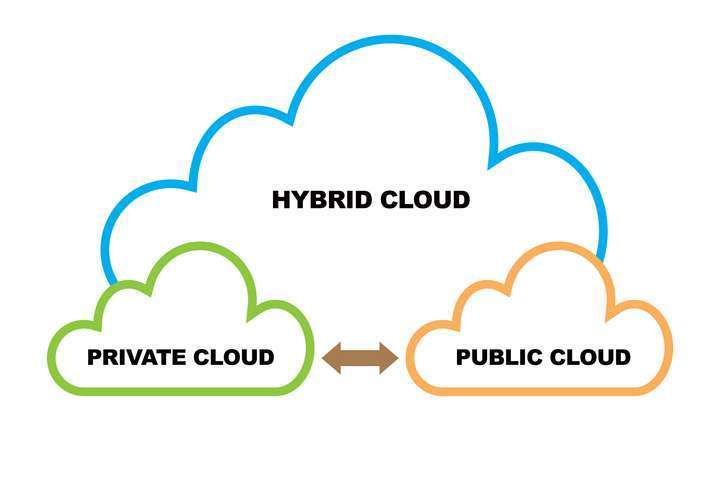
38. What are the advantages of integrating OpenStack with container orchestration platforms like Kubernetes?
Ans:
- Resource Efficiency
- Workload Portability
- Hybrid Cloud Management
- Scalability and Elasticity
- Multi-Tenancy
39. What is the OpenStack Foundation?
Ans:
The OpenStack Foundation is a non-profit organization that oversees the development and promotion of the OpenStack open-source cloud computing platform. It is crucial in assisting in the cooperative development, dissemination, and uptake of the OpenStack software.
40. What is the OpenStack Foundation’s role in the OpenStack community?
Ans:
- Governance and Leadership
- Community Support
- Legal and Intellectual Property Management
- Financial Support
- Technical Oversight
41. How can you troubleshoot common issues in an OpenStack deployment?
Ans:
- Check Service Status
- Review Logs
- Use OpenStack CLI and APIs
- Check Resource Quotas
- Network Connectivity
- Check Hypervisor Status
42. Explain the role of Sahara in OpenStack.
Ans:
Sahara is an OpenStack project that focuses on providing a scalable and easy-to-use platform for deploying and managing big data processing frameworks. The primary goal of Sahara is to simplify the provisioning and management of Hadoop clusters and other big data processing frameworks within an OpenStack environment.
43. What is the purpose of Barbican in OpenStack?
Ans:
Barbican is an OpenStack project that serves as a key management service, providing secure storage, provisioning, and managing cryptographic keys, passwords, and other sensitive data. The primary purpose of Barbican is to address the security challenges associated with managing and protecting sensitive information in a cloud environment.
44. How does Magnum support container orchestration in OpenStack?
Ans:
Magnum is an OpenStack project designed to provide a set of services for the orchestration, management, and scaling of containerized applications. It achieves this by integrating with popular container orchestration engines, with a primary focus on Kubernetes.
45. Explain the role of Ironic in OpenStack.
Ans:
Ironic is an OpenStack project that focuses on providing bare-metal provisioning services within an OpenStack environment. Unlike traditional virtualization, which involves running workloads on virtual machines, Ironic enables the deployment and management of workloads directly on physical hardware, or bare-metal servers.
46. What is the purpose of Zaqar in OpenStack?
Ans:
Zaqar is an OpenStack project that provides a messaging service for distributed applications. The primary purpose of Zaqar is to facilitate communication and coordination between components of cloud applications, enabling seamless interaction in a scalable and efficient manner.
47. How does Manila contribute to file sharing in OpenStack?
Ans:
Manila in OpenStack streamlines file sharing by providing a service for creating and managing shared file systems. This facilitates seamless collaboration among multiple instances, enabling them to access centralized file storage using protocols like NFS and CIFS.
48. What is the role of the Keystone service in OpenStack?
Ans:
Keystone is the identity service in OpenStack, playing a pivotal role in authentication and authorization across the entire cloud infrastructure. It provides a centralized identity and access management system, ensuring secure and controlled access to various OpenStack services.
49. Explain the role of the Cinder service in OpenStack.
Ans:
The block storage service in OpenStack, known as Cinder, is in charge of overseeing and offering persistent block-level storage to virtual machines (VMs) in an OpenStack context. Its function is essential for managing the storage requirements of cloud-based applications and guaranteeing data permanence.
50. How does the Swift service handle object storage in OpenStack?
Ans:
- Scalable and Distributed Architecture
- Objects and Containers
- Data Redundancy and Replication
- RESTful API Access
- Scalability and Performance
- Metadata and Custom Attributes
51. What is the function of the Heat service in OpenStack?
Ans:
Template-Based Orchestration: Heat operates on the concept of templates written in the HOT (Heat Orchestration Template) language or in AWS CloudFormation-compatible formats.
Automated Resource Provisioning: Heat automates the provisioning and management of resources specified in the templates.
Stack Lifecycle Management: In Heat, a template is instantiated as a “stack.” Heat manages the entire lifecycle of the stack, including resource creation, modification, and deletion.
Dependency Resolution: Heat understands dependencies between resources specified in the template.
52. How does Ceilometer contribute to monitoring in OpenStack?
Ans:
Ceilometer is the telemetry and monitoring service in OpenStack, designed to collect, process, and report data related to the usage of cloud resources. It plays a crucial role in providing insights into the performance, utilization, and health of OpenStack components.
53. What is the role of the Trove service in OpenStack?
Ans:
- Database Lifecycle Management
- Database Provisioning
- Multi-Tenant Support
- Automated Backup and Restore
- Scaling Databases
54. What is Xamarin?
Ans:
Building native mobile applications using the C# programming language is possible thanks to the cross-platform app development framework Xamarin. Developed by Xamarin Inc., the framework enables the creation of apps for iOS, Android, and Windows while sharing a significant portion of the codebase across these platforms.
55. Explain about Docker.
Ans:
Docker is a platform and collection of tools that allow developers to automate application deployment and scaling within lightweight, portable containers. These containers encapsulate the application and its dependencies, providing a consistent and isolated environment across different computing environments.
56. What is .NET Core SDK?
Ans:
.NET Core SDK (Software Development Kit) is a set of tools, libraries, and runtime components that developers use to build, deploy, and run applications on the .NET Core platform. .NET Core is an open-source, cross-platform framework for building modern, scalable, and high-performance applications.
57. What is CoreRT?
Ans:
CoreRT is an open-source .NET runtime optimized for ahead-of-time (AOT) compilation, primarily designed for scenarios where high performance and small deployment size are critical. It is part of the larger .NET ecosystem and is closely associated with the .NET Core platform.
58. What is MEF ?
Ans:
MEF stands for Managed Extensibility Framework, a .NET framework that provides a set of libraries and patterns for building extensible and modular applications. MEF simplifies the development of applications that can be easily extended or customized by allowing components (or extensions) to be discovered and composed dynamically at runtime.
59. What is Explicit Compilation?
Ans:
Explicit compilation refers to a process in programming languages where the source code of a program is explicitly transformed into machine code or another intermediate representation before execution. This is in contrast to languages that use just-in-time (JIT) compilation, where the transformation from source code to machine code happens dynamically at runtime.
60. Difference between .NET Core and .NET Framework.
Ans:
| .NET Core | .NET Framework |
|---|---|
| Designed to be cross-platform, supporting Windows, Linux, and macOS. | Primarily designed for Windows applications and services. |
| It’s more modular and lightweight, making it suitable for a variety of scenarios, including cloud-based and cross-platform applications. | It is not cross-platform and is tightly integrated with the Windows operating system. |
61. What is Universal Windows Platform?
Ans:
The Microsoft Universal Windows Platform (UWP) is a framework that allows developers to create programs that can operate on a variety of Windows platforms, including desktops, laptops, tablets, smartphones, Xbox consoles, and other devices. UWP is designed to provide a unified development platform for Windows 10 and later versions.
62. What is Transfer encoding?
Ans:
Transfer-Encoding is an HTTP header field that specifies the form of encoding that has been applied to the payload of the web content. It is used to indicate how the data was transformed before being sent in the message body. Transfer-Encoding is particularly relevant when the message body length cannot be determined in advance.
63. What is the difference between .NET Core and Mono?
Ans:
| .NET Core | Mono |
|---|---|
| Integrated into the larger .NET ecosystem and supports .NET Standard, which defines a set of APIs that should be available on all .NET implementations. | Historically had its own set of APIs, but it has been aligning more closely with .NET Standard to improve compatibility with other .NET implementations. |
| Optimized for performance and designed with a modular architecture. It benefits from advancements in runtime efficiency and startup time. | While performant, may not match the startup and resource efficiency of .NET Core, particularly in scenarios where these factors are critical, such as cloud and containerized environments. |
64. What are the types of CTS?
Ans:
- Value Types
- Reference Types
65. What is F#?
Ans:
F# combines functional programming paradigms with object-oriented and imperative programming. It is designed to be a succinct, expressive, and pragmatic language that excels in tasks related to data manipulation, parallel programming, and mathematical modeling.
66. What is CoreCLR ?
Ans:
CoreCLR, short for “Core Common Language Runtime,” is the open-source runtime component of the .NET Core framework. It is the execution engine that powers .NET Core applications. CoreCLR is responsible for loading, compiling, and managing the execution of .NET Core programs.
67. What is webHostBuilder()?
Ans:
In the context of ASP.NET Core, WebHostBuilder is a class that provides a convenient and fluent API for setting up and configuring an ASP.NET Core web application. It’s a part of the web hosting infrastructure and is used to configure the application’s services, middleware, and various settings. The WebHostBuilder class is typically used in the Program.cs file of an ASP.NET Core application.
68. What is CoreFx?
Ans:
CoreFX is the foundational set of libraries that form the base framework for .NET Core, the open-source, cross-platform framework developed by Microsoft. These libraries provide essential functionality that applications built on .NET Core rely on. CoreFX includes many classes and APIs for tasks such as file I/O, networking, cryptography, collections, threading, and more.
69. Write a program for addition of two numbers.
Ans:
- using System;
- class Program
- {
- static void Main()
- {
- Console.Write(“Enter the first number: “);
- string input1 = Console.ReadLine();
- Console.Write(“Enter the second number: “);
- string input2 = Console.ReadLine();
- if (double.TryParse(input1, out double number1) && double.TryParse(input2, out double number2))
- {
- double sum = number1 + number2;
- Console.WriteLine($”Sum of {number1} and {number2} is: {sum}”);
- }
- else
- {
- Console.WriteLine(“Invalid input. Please enter valid numeric values.”);
- }
- }
- }
70. What is the difference between DLL and EXE ?
Ans:
DLL (Dynamic Link Library): DLL files contain reusable code and data that may be used by several programs at the same time. They allow for code sharing and modularization of software.
EXE (Executable): EXE files are standalone executables that contain the compiled code and resources needed to run a specific program. They are designed to be launched independently.
71. What is Task in .NET?
Ans:
A Task in.NET is a graphical representation of an asynchronous activity. The Task class provides a higher-level abstraction for managing asynchronous operations compared to working directly with threads.
72. What is Thread in .NET ?
Ans:
The smallest unit of execution in.NET that may operate concurrently with other threads is known as a thread. A key component of multi-threaded programming is the thread, which enables the concurrent and independent operation of many software components. A Thread class is offered by the.NET Framework to generate and manage threads.
73. What is Client side variation in webpage ?
Ans:
Client-side variation in a webpage refers to the ability to dynamically alter the content, appearance, or behavior of a webpage on the client side (in the user’s browser) based on certain conditions or user interactions. This is typically achieved using client-side scripting languages such as JavaScript.
74. What are alarms in Openstack?
Ans:
In OpenStack, alarms play the role of watchful guardians, keeping a close eye on the health and performance of various components within the cloud infrastructure. Alarms are part of the Telemetry service, which was originally known as Ceilometer.
75. What is Cell in Openstack?
Ans:
In OpenStack, a cell is a concept related to the Cells v2 architecture, a feature designed to scale and manage large deployments more effectively. The Cells v2 architecture allows you to divide and conquer, breaking down a large OpenStack deployment into smaller, more manageable units called cells.


